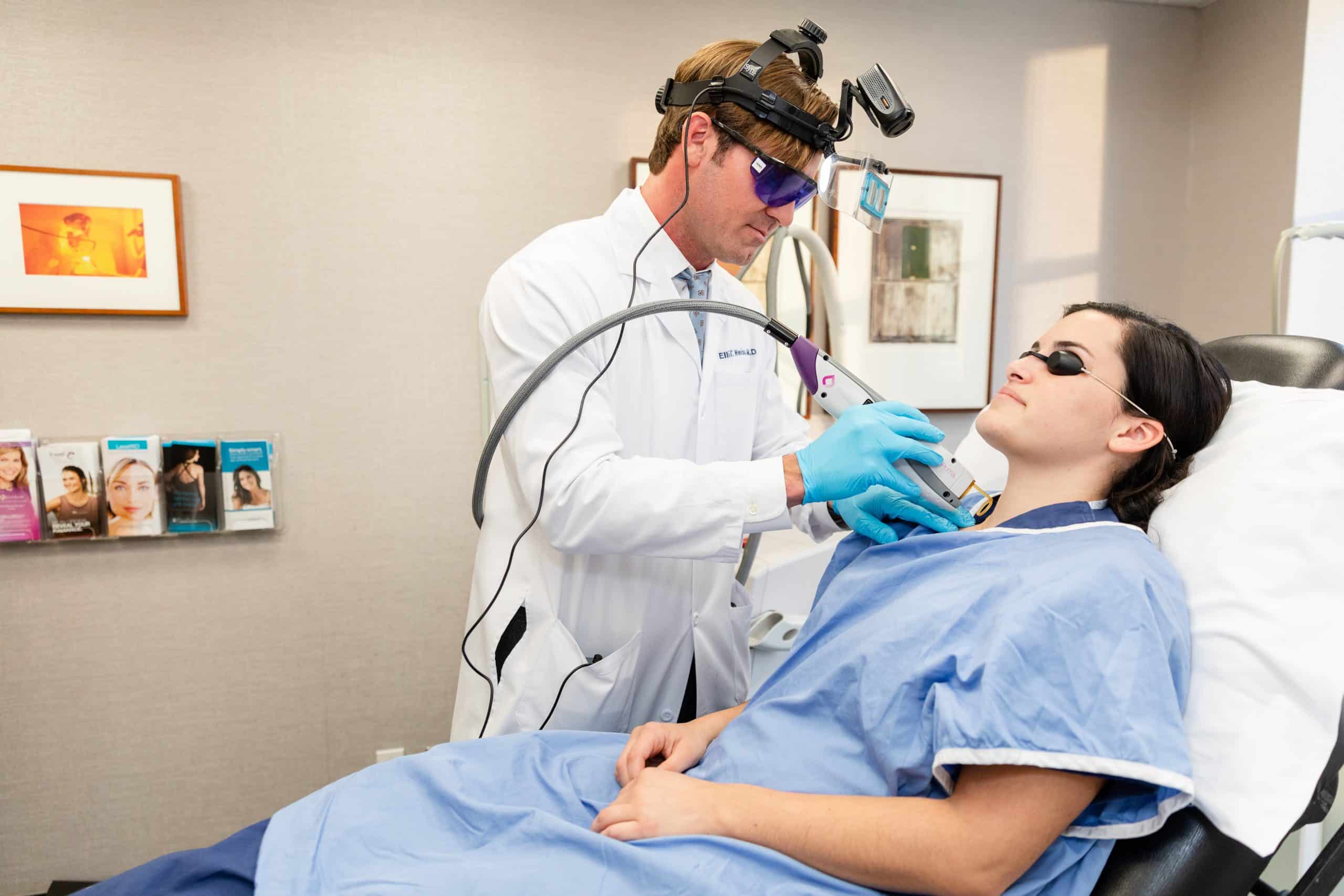Difference Between Hypertrophic and Keloid Scarring
Hypertrophic Scars
Keloid scars
Develop soon after injury
May have delayed development after injury
Subside with time
Rarely subside with time
Limited boundary
Overgrows wound boundary
Size proportional to injury
Minor injury may produce a large scar
Occurs across areas of motion/tension
Occurs in any areas
Improve with surgery
Often worsened by surgery
Hypertrophic Scarring
2010 Copyright © CosmeticSurgeryForums.com
Hypertrophic Scarring
2010 Copyright © CosmeticSurgeryForums.com
Keloid Scarring
2010 Copyright © CosmeticSurgeryForums.com
Keloid Scarring
2010 Copyright © CosmeticSurgeryForums.com
See More Scar Photos here
- Who is at RISK for Hypertrophic or Keloid Scarring
Hypertrophic scars normally do not get as big as keloids, and can be present in all racial groups. Keloids however tend to target racial groups which have a lot of melatonin in their skin, such as African American, Asian or Pacific Islander.
Dr. Lam talks about the difference of Hypertrophic Scarring and Keloids
- Treatments for Hypertrophic or Keloid Scars
Different treatments available to treat problematic scars
- Kenalog or Celestone Soluspan
The best and first line treatment of a Keloid is to inject long-acting cortisone. Kenalog and Celestron Soluspan are steroids that are injectedonce a month. After several injections with cortisone, the keloid usually becomes less noticeable and flattens out within three to six months time.
- 5-Flurouracil injections (5-FU)
5-FU injections can also be used alone or in combination with corticosteroid injections into keloid scars. This treatment stops fibroblasts from making new scar tissue. 5-FU is also used as a chemotherapy agent normally.
- Excision or scar revision surgery:
This can be risky with a patient that is prone to keloids. If surgery with a scar revision is considered, some surgeons like to inject steroids or apply a pressure dressing to the wound site after cutting away the affected keloid. Radiation is also considered after the excision of the affected area, so the keloid will not grow back.
Liquid Nitrogen is used to destroy tissue of both benign and malignant lesions by the freezing and re-thawing process. Applying liquid nitrogen does flatten out the keloid scar and is effective, but the side effect of this treatment is hyper-pigmentation after the fact.
Interferon is being used with some success with keloid scars. Interferon has been evaluated for efficacy in managing many diseases that involve the immune system. Injections of interferon into the actual keloid have shown promise in reducing the size of keloids, though it's not yet certain whether that effect will be a permanent result.
Pulse-dye lasers are also another method of reducing the sign of the keloid scar. These lasers tend to soften up the excessive scar tissue with making the scar flattened and less red. This treatment is very safe and not very painful; however it might take several treatments to see an improvement.
Silicone sheeting has helped many patients with their keloid scarring, however this method of treatment takes several months of wearing a sheet of silicone gel. Some doctors prefer “compression bandages” which have helped some see a positive end result. Both methods require a lot of time and patience on the part of the patient.
Silicone Sheeting has been around since the early 1980’s, and some patients have seen a remarkable difference in the appearance of keloid or hypertrophic scarring. Silicone sheeting is soft and pliable and will mold to any part of the body.
ReJuveness Silicone Sheets can also last up to 6 months or has been proven effective on old raised red scars (up to 20 years old) as well as newly formed scars.


























